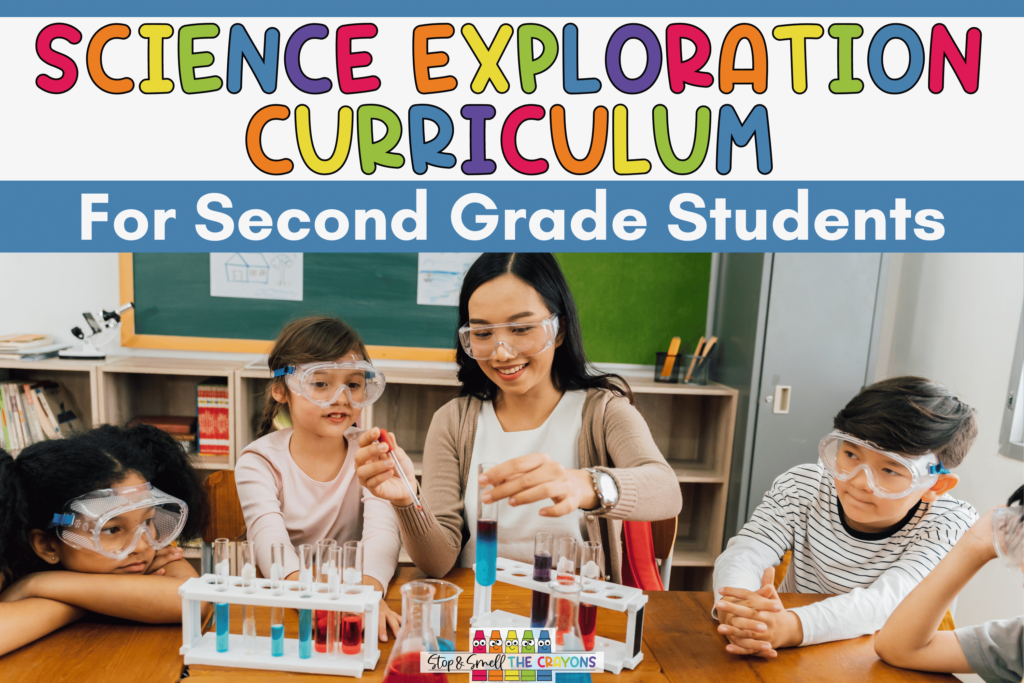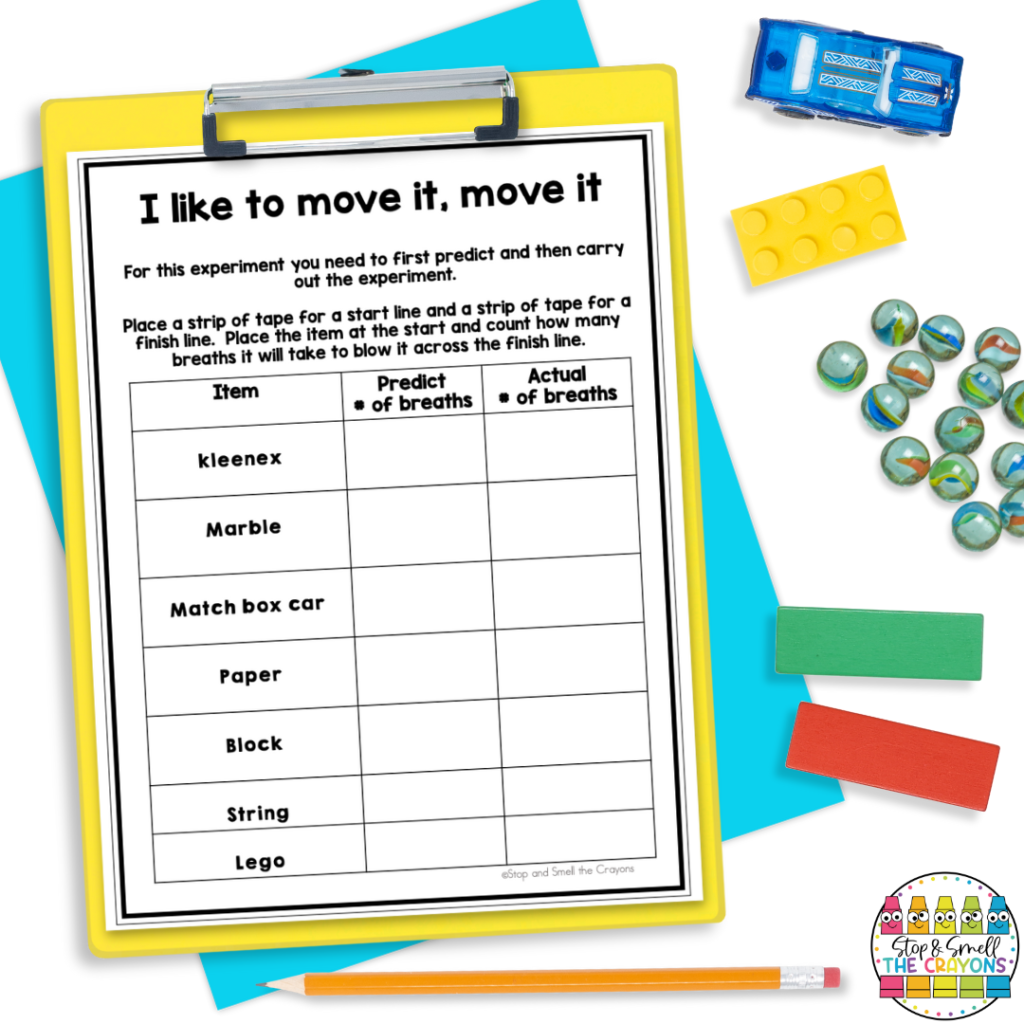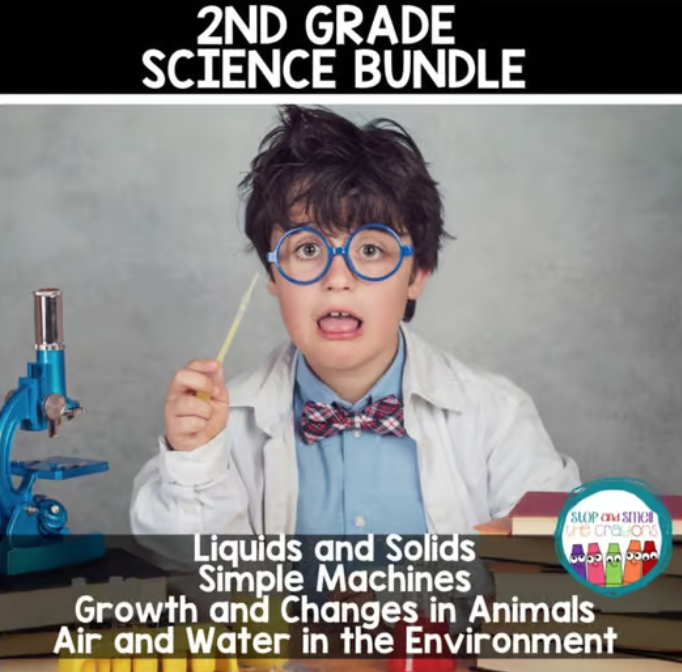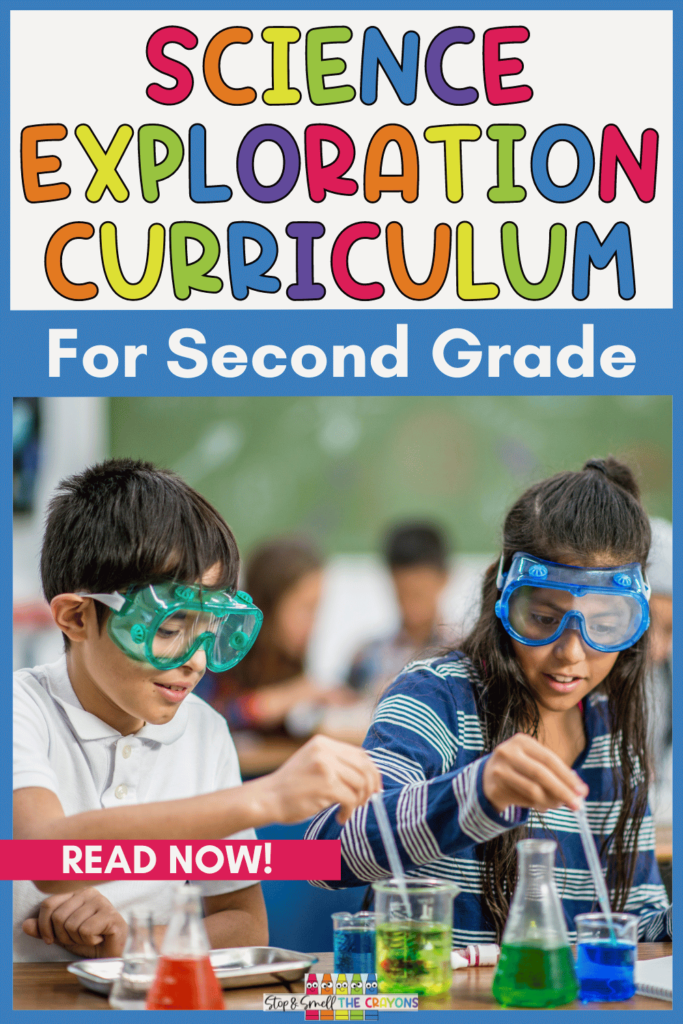I’m all about being efficient and effective, especially when it comes to lesson planning. Do you know what subject really gets me pumped? Science! There’s just something magical about those hands-on experiments and activities that really bring the concepts to life. I have to admit that when I was starting out, I had a hard time finding resources that were easy to use and engaging for my students. That’s why I decided to create my own Second Grade Science Exploration Curriculum. I’m super excited to share it with you today! This curriculum covers everything from air and water to simple machines, setting the stage for some awesome science learning in your classroom.

Importance of Science Exploration for Primary Students
Let’s talk about why science exploration is such a big deal for our little learners. First, it’s all about sparking curiosity. Have you ever seen a kid’s face light up when they see something cool happen in an experiment? That, right there, is the drive behind my teacher “why”. By exploring science at a young age, we’re laying the groundwork for a lifelong love of learning.

It’s not just about the “wow” factor. Science exploration also helps our kids develop critical thinking skills. When they’re experimenting and asking questions, they’re learning to think like scientists by analyzing, hypothesizing, and problem-solving along the way.
We can’t forget about creativity. Science is all about thinking outside the box and coming up with new ideas. By giving kids the opportunity to explore and experiment, we’re nurturing their creativity and encouraging them to think in innovative ways.
Plus, there’s something empowering about understanding how the world works. When kids grasp scientific concepts, they gain a sense of control and confidence. They start to see themselves as capable problem-solvers who can tackle anything that comes their way.
2nd Grade Science Exploration Units
Now that we’ve covered why science exploration is so crucial for our young students, let’s dive into the heart of it all, which is the second grade science curriculum itself!
I’ve designed this curriculum with one goal in mind… I want to make science fun, engaging, and accessible for every second grader. Each unit is carefully crafted to cover a range of topics, from the basics of air and water to the fascinating world of simple machines. So, without further ado, let’s take a peek at what’s in store.
Unit 1: Air and Water in the Environment
In our first unit, my students and I are learning about all things air and water.
I kick things off by introducing the concept of air. We’ll start by gauging what our students already know about air—does it weigh anything? Does it have a shape? We then dive into some thought-provoking questions and even conduct a mini experiment, inflating a balloon and discussing where the air comes from.

Throughout the unit, we’ll engage in a variety of hands-on activities to deepen our understanding. From crafting our own kites and windsocks to experimenting with pinwheels and parachutes, the sky’s the limit (pun intended) when it comes to exploring the power of air.
Speaking of power, we’ll investigate what makes air move as we test different wind devices and work on making and testing predictions. Ever wondered how many breaths it takes to move an item?
Next up, we’ll dive into the world of water. We’ll explore the different places water can be found and learn about its various forms, such as liquids, solids, and gases. And, of course, we can’t forget about the water cycle! We’ll recreate this amazing process inside a baggie as part of a fun experiment.
As we round out the unit, we’ll tackle important topics like water and air pollution. I have some memorable discussions about how we can all do our part to conserve these precious resources. With vocabulary posters and a water word search thrown into the mix, this unit is sure to make a splash in your classroom!
Unit 2: Growth and Changes in Animals
Unit 2 is a science exploration of animal growth and changes. Honestly, this is one of my top favorite units to teach because of all that my students can learn. It’s a deep dive into animal characteristics, classification, adaptation, and more. By the end, my students truly become animal experts!

We start off by exploring the different ways animals are classified. We look at everything from traits that stay the same to those that change as they grow. Speaking of growth, we’ll dive into the captivating topic of life cycles. Every living thing follows a life cycle beginning with being born, growing, changing, and eventually dying. Sometimes, offspring look just like their parents, while other times, they undergo dramatic transformations through metamorphosis. We’ll explore this phenomenon by covering the four stages of egg, larva, pupa, and adult.
Each animal or insect we encounter comes with its own mini-book packed with facts, examples, and even a word search to keep things exciting. Some animals have a sorting activity, while others illustrate the animals. Many of them come with an imposter game where our kiddos have to decide which living thing does not belong.
We’ll also sharpen our comparing skills as we examine how different animals are alike and how they’re different. As we round out the unit, we’ll take a closer look at animal adaptations, behaviors, and habitats, helping our students gain a deeper understanding of the incredible diversity of life on Earth.
Unit 3: Matter and Energy
In Unit 3, our little scientists take part in a science exploration of all things Matter and Energy! I made sure to jam-pack this unit to make it your ultimate resource for lessons on the states of matter. We’re diving deep into the realms of liquids, solids, absorption, buoyancy, viscosity, and more. This unit supports your grade 2 science standards and inspires your little scientists to explore the wonders of the physical world!

I love this unit so much because of how my kiddos’ eyes light up with interest. I owe this excitement to all the experiments and hands-on activities that bring the concepts of liquids and solids to life. We’re not just talking about definitions or theories here. Our students will get their hands dirty (in a good way!) as they dive into real-life experiments using everyday items to make learning relevant and memorable.
From exploring absorption and buoyancy to investigating how liquids move and what happens when liquids and solids are mixed, each experiment is carefully crafted to engage young minds. Your students will step into the shoes of scientists as they follow the scientific process, record observations, and use collected data to answer questions. It’s hands-on learning at its finest! Each experiment’s goal is to solidify understanding. They help your students grasp the topic at hand and build a strong foundation of knowledge.
Unit 4: Simple Machines
My simple machines unit sparks an unforgettable science exploration for my kiddos! A goal of all my units is to help my students discover how science is all around them, and this unit does just that! My kiddos have a blast with the hands-on experiments, worksheets, and center activities designed to engage.
We kick off with a brainstorming session to set the stage. Through this step, we explore the different types of movements all around us, from pushing and lifting to swimming and flying. We’ll analyze picture scenes to practice using specific words to describe the positions of objects. A fan-favorite activity amongst my kiddos is a trip to the playground. What better way to understand movement than by visiting it and observing firsthand what’s being pushed or pulled?

Next, we dive into the essential components of movement and explore how simple machines play a role in our everyday lives. Your students will discover the impact of simple machines on their lives and the environment around them. Then, they will investigate how different mechanisms enable movement. They combine all that knowledge to demonstrate an understanding of how simple machines help to move objects.
The next project is to head out on a little staycation field trip right at our school! Armed with a scavenger hunt, my kids have so much fun exploring every nook and cranny, hunting for simple machines hiding in plain sight. I love watching them have those lightbulb moments of realizing how everyday objects are simple machines!
And, of course, we couldn’t forget about the hands-on experiments! From levers and pulleys to inclined planes and wheels, your students will observe these simple machines in action. This helps to solidify their understanding in a tangible way.
Make Science Exploration Memorable
I’m thrilled to see how science exploration ignites a passion for learning in my students. Being efficient and effective in lesson planning is crucial. Science offers endless opportunities for engagement and discovery. From the wonders of air and water to the complexities of animal growth and changes, and from exploring the properties of matter and energy to uncovering the workings of simple machines, each unit in my curriculum is designed to captivate young minds and spark curiosity.
By making science fun, accessible, and hands-on, I’m empowering my students to become fearless explorers of the world around them. Together, we’re making science exploration not just educational, but truly unforgettable! If you need a little help planning your year, don’t forget, you can find all of the resources mentioned here in my 2nd Grade Science Bundle!

Additional Resouces for Teaching Second Grade Science
If you are interested in more resources to encourage science exploration, check out this post about Science Supplies for Hands-on Learning. This post has everything you need to know to get started teaching amazing science units in your room!
Save these Second Grade Science Resources
Remember to save this post to your favorite science or second grade Pinterest board so you can plan an amazing year of second grade science activities for your students!
